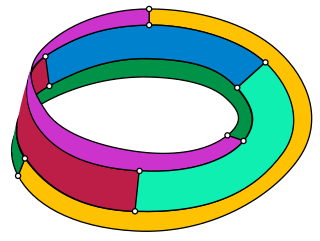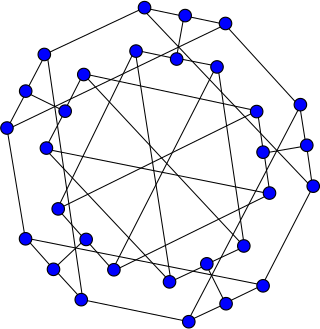| Watkins snark | |
|---|---|
 The Watkins snark | |
| Named after | J. J. Watkins |
| Vertices | 50 |
| Edges | 75 |
| Radius | 7 |
| Diameter | 7 |
| Girth | 5 |
| Automorphisms | 5 |
| Chromatic number | 3 |
| Chromatic index | 4 |
| Book thickness | 3 |
| Queue number | 2 |
| Properties | Snark |
| Table of graphs and parameters | |
In the mathematical field of graph theory, the Watkins snark is a snark with 50 vertices and 75 edges. [1] [2] It was discovered by John J. Watkins in 1989. [3]
Contents
As a snark, the Watkins graph is a connected, bridgeless cubic graph with chromatic index equal to 4. The Watkins snark is also non-planar and non-hamiltonian. It has book thickness 3 and queue number 2. [4]
Another well known snark on 50 vertices is the Szekeres snark, the fifth known snark, discovered by George Szekeres in 1973. [5]


















